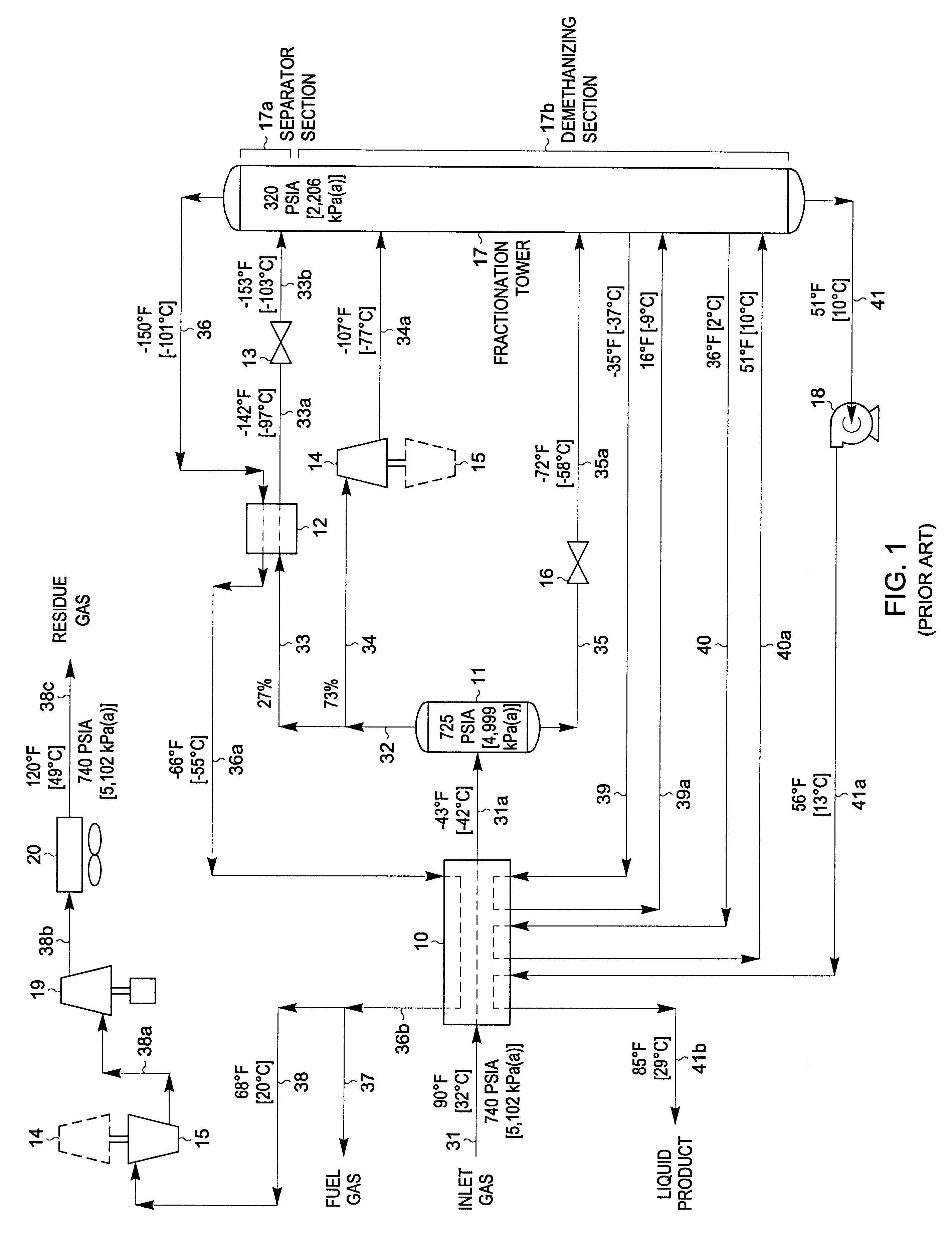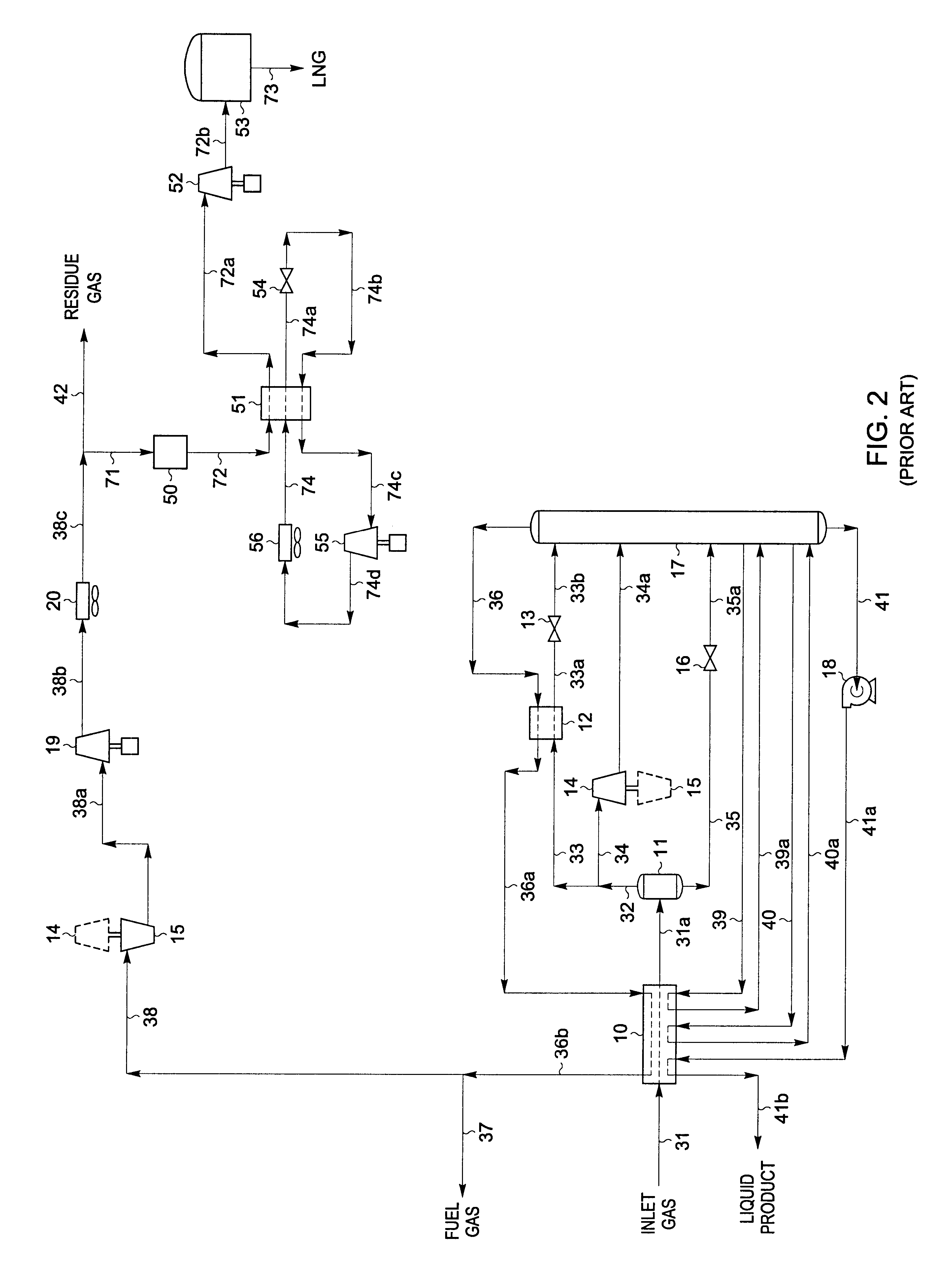LNG production in cryogenic natural gas processing plants
a technology of cryogenic natural gas and processing plants, which is applied in the direction of gaseous fuels, liquefaction, lighting and heating apparatus, etc., can solve the problems of reducing the purity (i.e. methane concentration) of lng products, reducing the value of liquid products for the plant operator, and affecting the quality of the liquid produ
- Summary
- Abstract
- Description
- Claims
- Application Information
AI Technical Summary
Problems solved by technology
Method used
Image
Examples
example 2
FIG. 4 represents the preferred embodiment of the present invention for the temperature and pressure conditions shown because it typically provides the most efficient LNG production. A slightly less complex design that maintains the same LNG production with somewhat higher utility consumption can be achieved using another embodiment of the present invention as illustrated in the FIG. 5 process. The inlet gas composition and conditions considered in the process presented in FIG. 5 are the same as those in FIGS. 1 through 4. Accordingly, the FIG. 5 process can be compared with that of the FIG. 2 and FIG. 3 processes to illustrate the advantages of the present invention, and can likewise be compared to the embodiment displayed in FIG. 4.
In the simulation of the FIG. 5 process, the inlet gas cooling, separation, and expansion scheme for the NGL recovery plant is essentially the same as that used in FIG. 4. Inlet gas enters the plant at 90.degree. F. [32.degree. C.] and 740 psia [5,102 k...
example 3
In FIGS. 4 and 5, a portion of the plant inlet gas is processed using the present invention to co-produce LNG. Alternatively, the present invention can instead be adapted to process a portion of the plant residue gas to co-produce LNG as illustrated in FIG. 6. The inlet gas composition and conditions considered in the process presented in FIG. 6 are the same as those in FIGS. 1 through 5. Accordingly, the FIG. 6 process can be compared with that of the FIG. 2 and FIG. 3 processes to illustrate the advantages of the present invention, and can likewise be compared to the embodiments displayed in FIGS. 4 and 5.
In the simulation of the FIG. 6 process, the inlet gas cooling, separation, and expansion scheme for the NGL recovery plant is essentially the same as that used in FIG. 1. The main differences are in the disposition of the cold distillation stream (stream 42) and the compressed and cooled third residue gas (stream 44a) produced by the NGL recovery plant. Note that the third resid...
PUM
 Login to View More
Login to View More Abstract
Description
Claims
Application Information
 Login to View More
Login to View More - R&D
- Intellectual Property
- Life Sciences
- Materials
- Tech Scout
- Unparalleled Data Quality
- Higher Quality Content
- 60% Fewer Hallucinations
Browse by: Latest US Patents, China's latest patents, Technical Efficacy Thesaurus, Application Domain, Technology Topic, Popular Technical Reports.
© 2025 PatSnap. All rights reserved.Legal|Privacy policy|Modern Slavery Act Transparency Statement|Sitemap|About US| Contact US: help@patsnap.com



